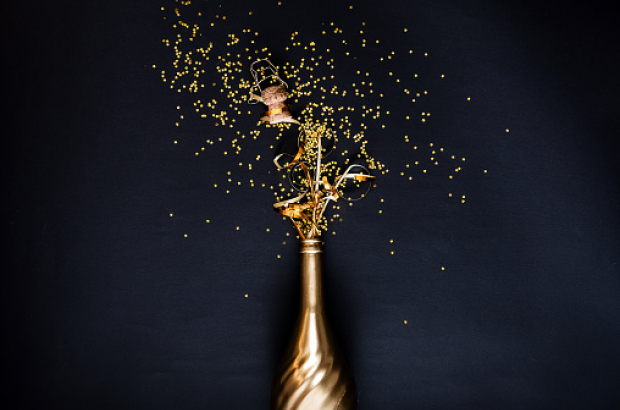- Daily & Weekly newsletters
- Buy & download The Bulletin
- Comment on our articles
Festive bubbles: Enjoy a sparkling Christmas and New Year!
No other sound rings in a festive gathering than the pop of a cork. Sales of Champagne and sparkling wines are currently fizzing as shoppers make last-minute purchases for the holiday season.
Choosing the right bubbly for the occasion is not always easy. If Champagne remains the king of the bubbles with Belgians consuming almost 10 million bottles a year, the nation drinks nearly 30 million bottles of cava, reported RTBF earlier this year.
As regular tipplers of fizz will know, not all sparkling wines can be called Champagne. Only those wines produced in the Champagne region of France can be officially designated with the name, according to the Appellation d’Origine Contrôlée AOC. And while cava originates from Spain, the other fashionable European sparkler is Italian prosecco.
Although cava is more popular in Flanders, the south favours sparkling wines like Crémant. This festive fizz is produced in a number of regions in France and is made in a similar way to Champagne, with a second fermentation in the bottle. That’s why another term for sparkling wine is traditional method (methode traditionnelle).
In blind tests, it’s frequently difficult to pick out Champagne from its more affordable rivals. And among Champagnes, there’s enormous variety in price as consumer magazine Test achat/Test aankoop revealed in its recent annual Champagne test.
Proving that price is not always the best guideline to quality, its top three were: Nicolas Feuillatte selection brut (€23.99, Carrefour Belgium, Spar Colruyt Group, Cora), Marquis de Villon brut (€22.99, Colruyt) and Piper-Heidsieck cuvée brut (€31.00, multiple outlets).
In fourth place was Moët & Chandon Impérial Brut (€38.09, multiple outlets), fifth G.H. Mumm Cordon Rouge Brut (€33.99, multiple outlets) and sixth Pommery Brut Royal (€33.29, multiple outlets).
Among Test achat’s ‘best buys’ were Comte de Senneval Brut (€13.99, Lidl) in seventh place and Diane de Frion Brut (13.99, Albert Heijn) coming in eighth.
Buying a locally-sourced sparkling wine is an increasingly crowd-pleasing alternative and Belgium’s cooler climes favour sparkling and white wines.
The country has five officially demarcated AOCs, four in Flanders and one in Wallonia. Among the reputed fizzes north of the country, there’s Aldeneyck Pinot Brut, Maaseik, Entre-Deux-Monts Brut and Schorpion Brut Goud.
In Wallonia, three quality labels promote the larger producers: Côte de Sambre et Meuse, Crémant de Wallonie and Vin mousseux de qualité de Wallonie.
These home-grown crops include Domaine des Agaises in Hainaut, better known under its brand name Ruffus. It’s been winning awards for its zingy Champagne-style fizzes for a number of years and so popular is demand, customers need to place orders in advance.
Sparkling wine is also the speciality of Domaine du Chant d’Eole, which similarly cultivates the chalky soil around Mons. At a prestigious world competition in Brussels in 2019, the jury awarded the prize of international revelation of the year to the wine grower for its white and rosé fizzes, the first time a French Champagne had not been crowned.
Wine and spirit cellar Wine & More at Erpent, near Namur, has long privileged local producers. “It’s clear that an award brings recognition, but way before the medal we believed in Chant d’Eole,” says manager Emmanuel Gillet, who also runs a wine appreciation course at the store and restaurant.
“Ruffus and Chant d’Eole are different, although both major quality; Ruffus is light and refreshing, while Chant d’Eole is more like a wine,” he points out.
Overall, Wine & More sells more traditional method sparkling wines like Crémant from Jura than cava, says Gillet. “Nevertheless, at the end of the year, sales of Champagne increase considerably. Our clients like to treat themselves during the holiday season.”
If Champagne is traditionally served as an aperitif, it can also handle shellfish if its crisp and fresh, while a mature wine-like Champagne can accompany a main dish and a rosé a dessert, advises Gillet.
And does he have any personal favourites? “Louis Roederer Champagne Vintage 2012 and Jacques Sélosse Champagnes are my preferred ones.”
Photo: iStock/Getty Images Plus



















